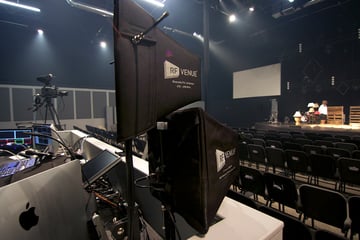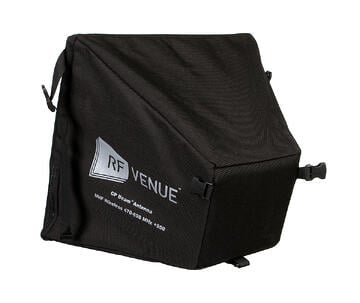- Products
- All Products
- RF PA Extension Kit
- Wireless Microphone Upgrade Packs
- In-Ear Monitor Upgrade Packs
- Wireless Microphone Antennas
- Wireless In-Ear Monitor Antennas
- Antenna Distribution for Microphones
- Antenna Combiners for In-Ear Monitors
- Multi-Zone Antenna Combiners
- Spectrum Tools
- Accessories, Cables and Parts
- Solutions by Venue
- Resources & Training
- Performance Tools
- About Us
December 14, 2014
Using an Antenna Distributor as a Combiner Has Consequences
Written by: Alex Milne

Occasionally we hear customers mention that they can turn a distributor into an IEM combiner by simply flipping it around, and plugging coax from two or more IEM transmitters into the outputs of an antenna distributor, resulting in the signals being carried through the distributor and out the antenna as an active, transmitted signal. Unfortunately it doesn’t work that way. Not only will this configuration fail to work, but it might actually destroy your distributor, or even start a fire.
[For an introduction to distribution vs. combination, please look here]
Wireless mic distributors are unidirectional, small signal distribution amplifiers that consist of some type of passive splitter, and a number of amplifiers to compensate for signal loss incurred by the splitting process. The circuitry inside a distributor can only use signals traveling in one direction, and is designed to handle and amplify extremely small amounts of RF energy—tens of thousands or even millionths of one watt of received power.
IEM combiners, on the other hand, use active signals from IEM transmitters that are up to a quarter of a watt. And they are equipped with amplifiers with high insulation to avoid IEM signals from contaminating one another.
Plugging even a modest 50 mW IEM transmitter into the front or back end of an antenna distributor introduces a power source orders of magnitude greater than what the device was designed for. Plug in a higher power IEM, like 250 mW, and your distro is now a very expensive matchstick.
To be fair, there are some versions of passive mini splitters that can be used as bidirectional circuits to both distribute and combine low power RF signals. Maybe that's where this mistaken belief comes from. But that is an "off label" use, and the circuitry inside a distro is much different than in a mini splitter.
Antenna distribution in general is a bit trickier than the modular, plug-and-play A/V components that we all take for granted these days. So if you’re tinkering around with a distribution system, please seek out the expertise of an RF engineer or someone with a background in electronics before voiding your warranty, or worse.
Leading image courtesy peretzpup.
Alex Milne
Alex Milne was Product Marketing Manager and Digital Marketing Manager for RF Venue, and a writer for the RF Venue Blog, from 2014-2017. He is founder and CEO of Terraband, Inc., a networking and ICT infrastructure company based in Brooklyn, NY., and blogs on spectrum management, and other topics where technology,...
More from the blog

COMBINE4 Transmitter Combiner
Contemporary NORTHchurch.tv Improves Wireless with Antenna Distribution
4 min read
| February 7, 2015
Read More

RF Spotlight Antenna
RF Venue Co-Founder Robert Crowley Talks Product Design
10 min read
| May 31, 2015
Read More

CP Beam Antenna
Visualizing Directional and Nearfield Antennas in Central Park
1 min read
| April 8, 2015
Read More
Subscribe to email updates
Stay up-to-date on what's happening at this blog and get additional content about the benefits of subscribing.

